
Pests and Diseases
Generally, Buddleja are problem free, although some of the newer ultra-compact hybrids are particularly prone to attack from pathogens and pests. There are a few things to watch out for and most have a solution other than the use of artificial pesticides. Many issues can be addressed by good horticultural practices, particularly maintaining a healthy, rich soil with good drainage.
Although primarily the problems shown concern B. davidii and its hybrids, other Buddleja species and hybrids are likely to be affected by the the same pests and diseases.
Viruses
Buddleja rarely suffer from viral infections. Cucumber mosaic virus (CMV) will occasionally be seen. 'Adonis Blue' often carries CMV with little affect on either its health or its vigour, and I've yet to see the infection transfer to any other Buddleja although the virus is spread by sap-sucking insects. The virus makes its presence known by the appearance of small pale patches on the upper surface of the leaves. There's no cure, although regular pruning seems to keep the symptoms to a minimum.
Another problem that may arise is the appearance of very spindly growth from an otherwise normal plant. In these cases the leaves become much narrower than usual, often with more serrated margins, and the internodes can be shortened. Inflorescences are smaller and stunted with fewer flowers. I have not been able to isolate the exact pathogen; the symptoms resemble 'Ash Yellows', which is caused by a Phytoplasma bacterium, but the leaves I had tested were negative for this infection. My working theory is this is caused by a virus. Other possibilities include transposable DNA elements in the genome or damaged chromosomes.
The affected branches should be cut out, taken back as far as possible, and with luck that will solve the issue. However, the disease can reappear; if the infection has become systemic and the spindly growth keeps coming back, the plant is best removed and burnt. Cuttings taken from a 'clean' part of the plant usually grow normally unless the infection has become systemic, in which case the issue might reappear at a later date. I've seen this three times in my collection - twice I was able to strike a cutting that remained free of infection and once the cuttings succumbed within the year.
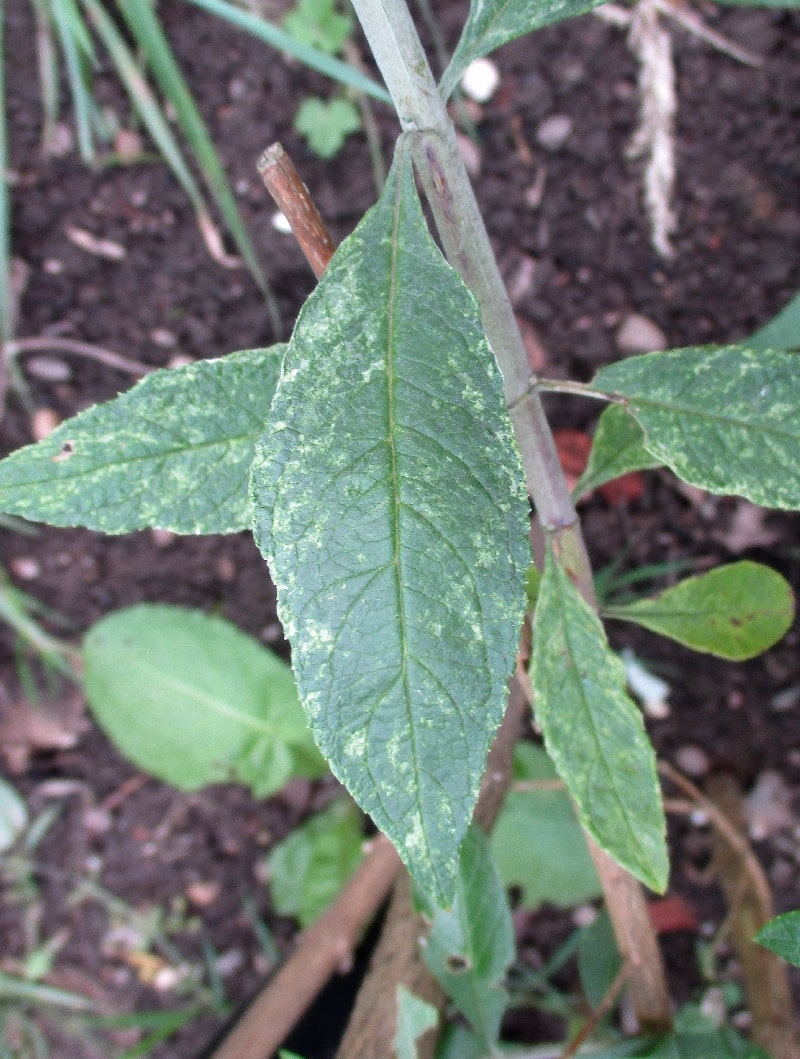
A leaf showing the symptoms of CMV.
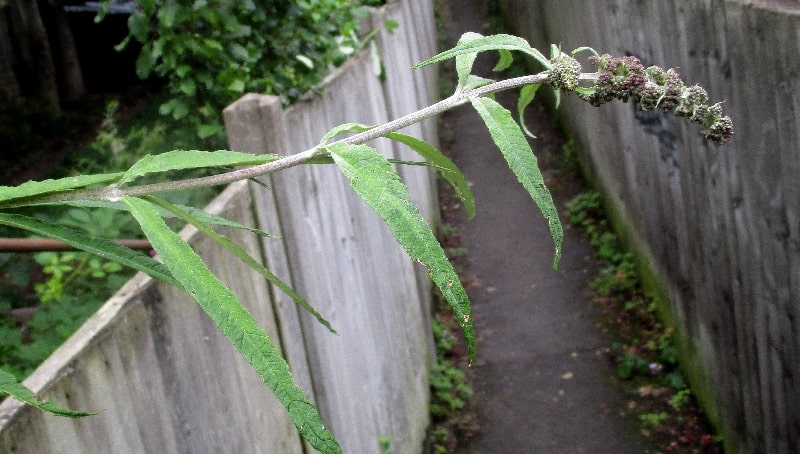
Abnormally narrow leaves could be the sign of a virus.
Fungal Pathogens
and Problems
Botrytis and downy mildew are two diseases caused by a number of fungal species and most common in cool, damp conditions. They are quite similar, causing lesions on the
Botrytis (Grey Mould) causes circular brown lesions on the leaves. More serious damage is particularly associated with autumn, where the foliage and buds can become covered in a grey fuzz as the fungus consumes the dying tissues.
Downy mildew also thrives in damp conditions, and causes angular patches on the leaves between the veins. The fungus itself is more often visible on the underside of the leaves. Badly infected foliage will turn brown and die back when conditions become drier.
Chemical fungicides are available, but these can also harm beneficial fungi in the soil. The way to avoid fungal damage, which mostly occurs under cover, is to ensure good ventilation and airflow, preventing the build up of the damp the pathogens need to take hold. The B. x weyeriana hybrids are especially susceptible to downy mildew, as are some of the species hailing from dry habitats.
Young seedlings can be prone to fungal disease and are more at risk of dying. Damp conditions can cause fatal downy mildew. If the compost is kept too wet, seedlings are at risk of damping off, which is caused by a variety of fungal pathogens.
In wet, cold soils a number water-borne fungal pathogens (for example Phytophthora spp.) can damage the roots. This usually happens over winter; in the spring the new roots fail to form and the plant, at first appearing healthy, wilts and dies when the weather warms up. Un-compacted soil with good aeration and drainage will usually stop this problem occurring. For plants in pots, it is important the compost is refreshed and then kept relatively dry over the winter months. Once a plant is struggling with this issue, the only answer is to immediately take cuttings and grow a replacement plant, which can be planted once the soil is rested and drainage improved with compost, lime in very acid soils, and grit.
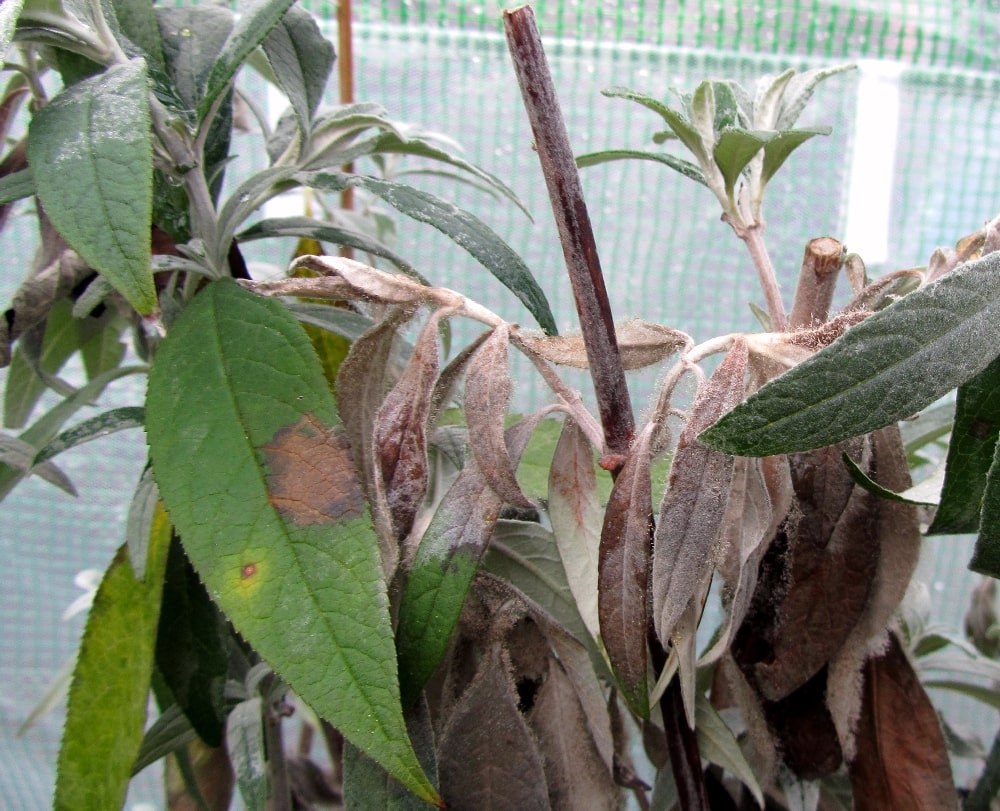
Grey mould can devastate a plant in autumn.
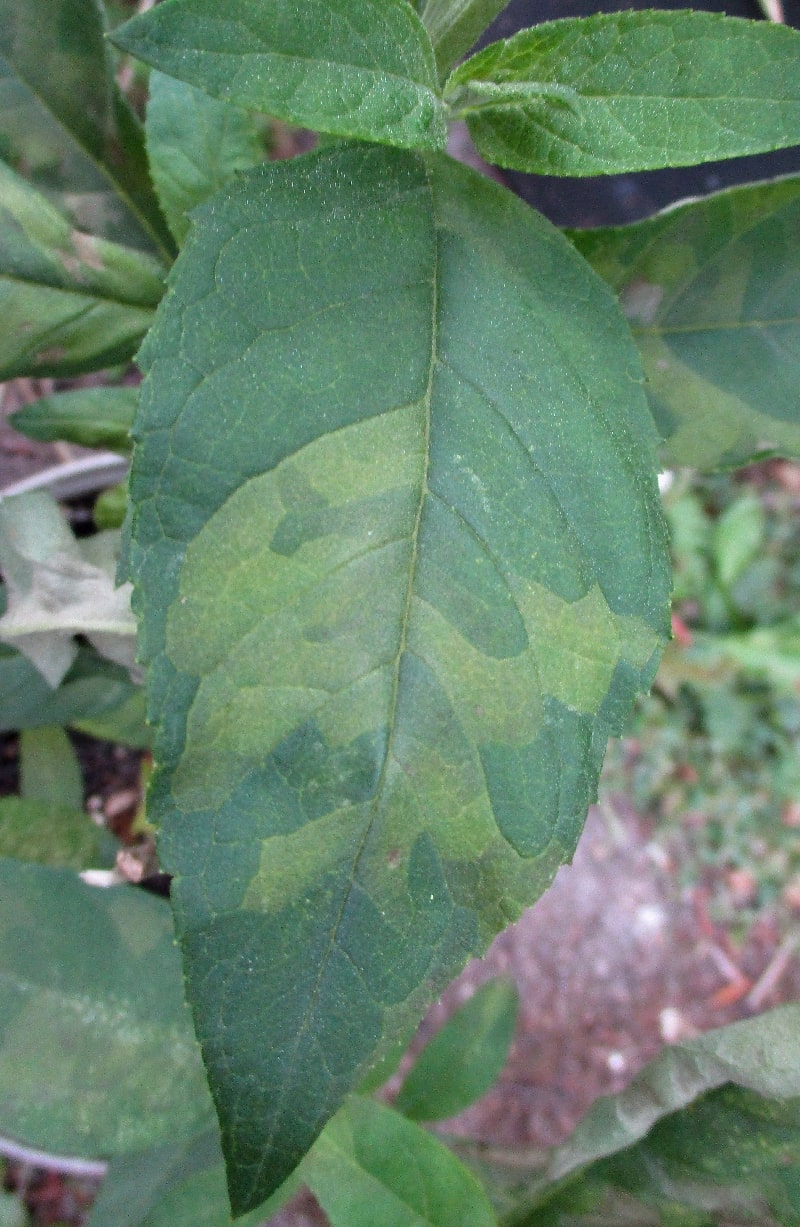
The patches caused by downy mildew.
Eelworm - Nematode
Most nematodes are harmless or even beneficial, with only Aphelenchoides spp. causing disease. They live in the spaces inside the plant tissues disrupting the growth. The damage caused by these tiny worms can look quite similar to a fungal infection in the buds, although the growing point and emerging leaves will be more obviously stunted and distorted with this parasite. One way to diagnose nematode accurately is to cut up and immerse the damaged shoot tips in water, leave for a half-hour or so, and examine the water for tiny white wriggly worms with a magnifying glass.
Nematodes, good and bad, are endemic in most soils. A healthier soil full of life will actually be lower in pathogenic nematodes, so good horticultural practices like mulching with compost and the avoidance of pesticides are a first line of defence. If a plant is infected, cut off the affected shoots and burn them.
Unfortunately, some cultivars are more prone to this infection: a few of the new ultra-compact hybrids have absolutely no resistance, for example Rocketstar® Flamingo (syn. Pugster® Pink), and these plants can lose all their flower buds in soils carrying nematodes. But most of the species and traditional cultivars are unlikely to be affected to any great extent.
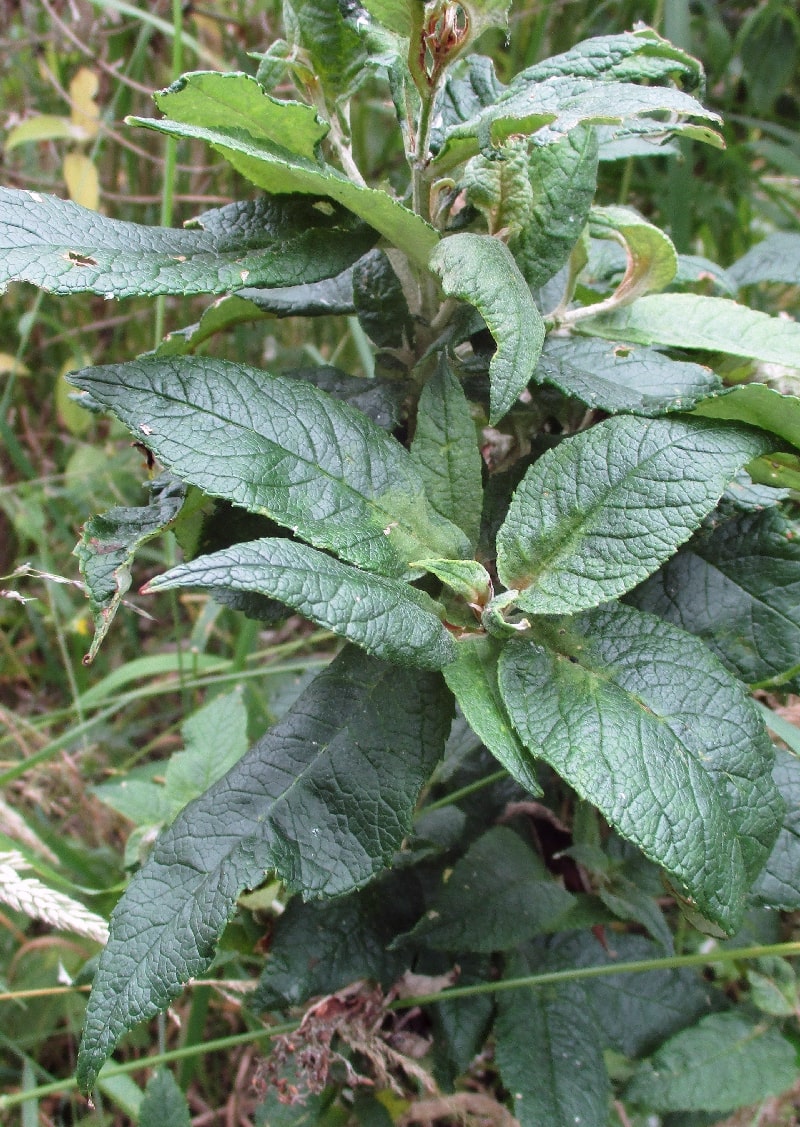
Nematodes can destroy the growing tips.
Spider Mites
Tetranychus urticae, the two-spotted spider mite, is a common problem in dry hot conditions. Also called the red spider mite.
This pest seems particularly attracted to plants already weakened, and to new cuttings and seedlings kept in a greenhouse. Mature plants are rarely affected, and then only if under cover. The tiny arachnids (about 0.5mm long) live on the underside of leaves and eat the green cells in the foliage, mottling the leaves in colourless spots denuded of chlorophyll. The pattern is rather different from that of mosaic virus, and usually you can see the mites under the leaves using a magnifying glass. Eventually, the leaves are ruined and small plants can even die from the loss of their photosynthetic capacity. If the number of mites gets really high, webbing (like spider silk) starts to appear on the plants, which the mites use to move around.
Pesticides can be ineffective as these pests develop resistance very quickly. Oil-based sprays (such as neem oil) are not very effective. Predator mites have never worked for me, but can be effective if introduced at the right time. By far the best cure is rain - they cannot take the wet. Misting several times a day in hot dry weather slows them down considerably. And washing the undersides of leaves with rainwater (or boiled tapwater) also controls their numbers until the rain can finish the job.

The pattern caused by Spider Mites

Look for spider mites under the leaves using a magnifying glass.
Aphids
A number of different aphids will feed on Buddleja. The Mullein aphid (Aphis verbasci) will feed on Buddleja, as will generalist aphids like potato aphid. An unidentified green aphid also causes yellowed lesions on leaves somewhat like blister aphid. This aphid can also cause serious distortions at the growing point, but, unlike nematode, the growth from the bud will return to normal once the aphids have departed.
Although these pests can look dramatic, aphids cause no permanent harm. The best way to deal with the pest is to encourage predators like ladybirds and their larvae, and lacewing and hoverfly larvae. Bad infestations can be washed off with a hose or a spray; if particularly stubborn horticultural soap or neem oil can be added to the spray. More radical chemical solutions run the risk of introducing residues into the nectar of the flowers, harming bees and butterflies, so are best avoided.
Other Insect Pests
Vine Weevils in the adult stage do little damage, maybe no more than a notch in a leaf. However, they lay their eggs in the late summer and autumn, and these hatch into grubs who consume the plant roots over the winter. All looks well until the first of the warm weather arrives the next spring when the plant will wilt and die. Buddlejas planted into reasonably heavy soil are safe from vine weevil grubs, but those in pots or in raised beds with compost can be vulnerable, mostly because the adult weevils look for friable media in which to lay their eggs. Systemic pesticides are an absolute no-no, as the residues will find their way into flowers and harm pollinators. I've found nematode treatments (Nemasys) to be very effective, with just a single application each September eliminating the threat.
Sawfly are related to bees and wasps, these small flies lay eggs on Buddeja, especially on plants under cover where it's nice and warm. These can be a problem in spring, summer and particularly autumn when the adults are looking for somewhere sheltered to lay their eggs. The green grubs, up to 1 cm in length, use silk to stitch together the upper leaves of the stems and feed on the leaves and the buds. Never fatal, and rarely causing more than the loss of a flower or two, the best method of control is garlic and chilli spray. Simply boil a garlic clove and a chopped red chilli in some water, cool and strain. Sawfly hate it - the grubs drop off the plants and the smell dissuades the adults from coming near to lay more eggs.
Caterpillars cause some damage to leaves, but generally will do little serious harm to a large plant. Seedlings and cuttings are more at risk as the soft fast-growing foliage is more sought after. The mullein (Verbascum) moth caterpillar is able to feed on Buddleja, Verbascum and Buddleja both being from the family Scrophulariaceae. They are distinctive grey caterpillars with yellow and black markings. Noctuidae moth caterpillars are hairless fleshy grubs up to 3cm long, green or brown, and can be nuisance on young plants and under cover. They come out at night so you have to search for them under the leaves and on the lower stems. As with sawfly, garlic spray will deter the adults from laying eggs on the plants.
Shield bugs are bright green or brown sap-sucking insects around 1 cm in length. Both the adults and the nymphs are attracted to Buddlejas to feed. Not usually much of a problem even though they pierce young stems to get at the sap, but the wound can weep leaving an unsightly black blob.
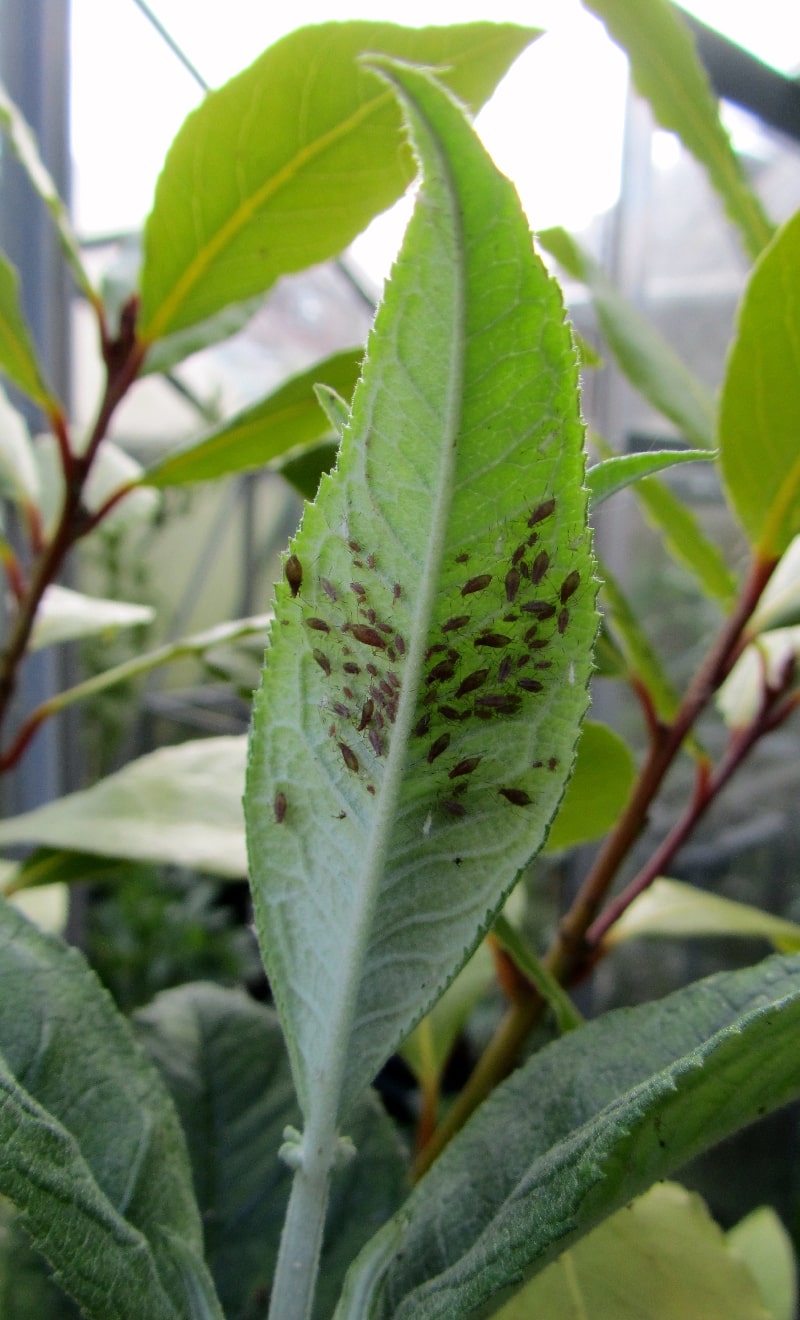
These are probably brown potato aphids on the underside of this leaf
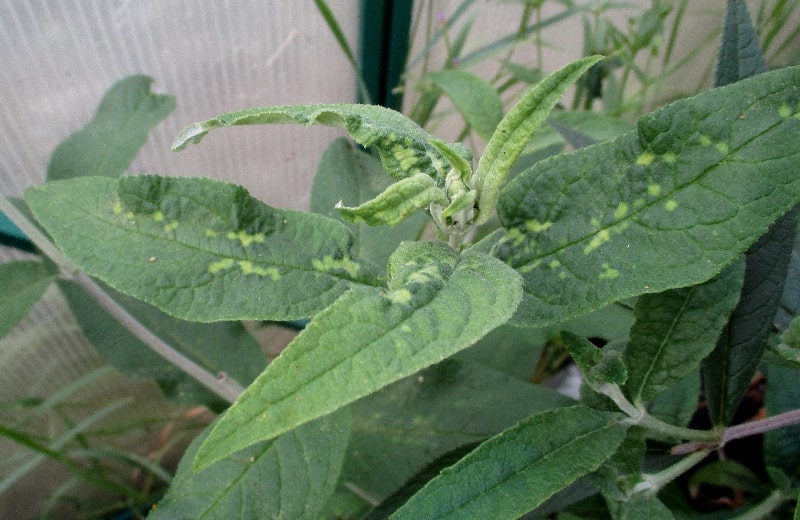
Aphid damage, type unidentified.
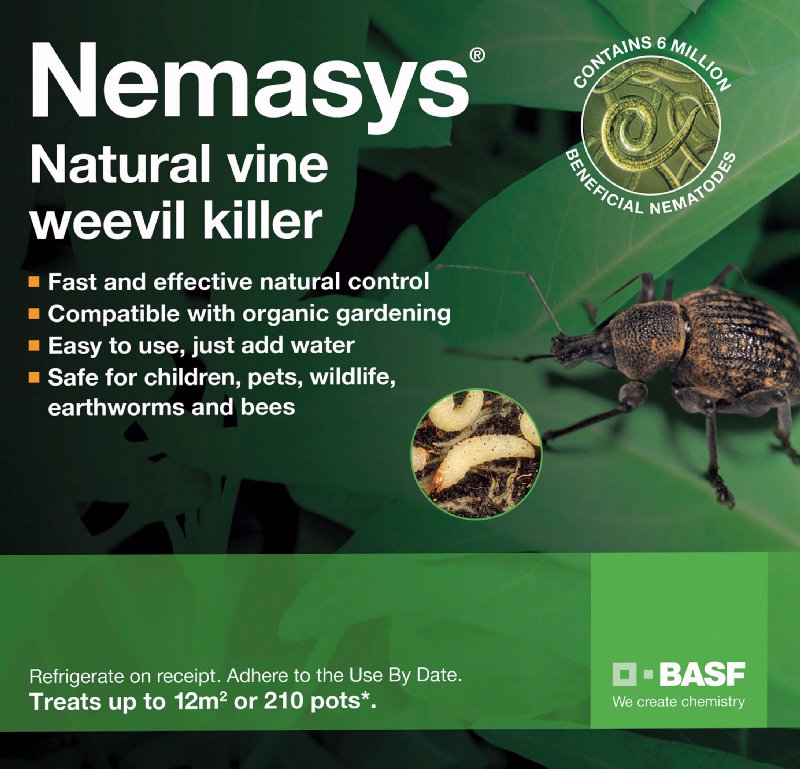
Nematode treatment is very effective against vine weevil grubs.
Email:
buddlejagarden@gmail.com
© The Buddleja Garden 2011-2025.